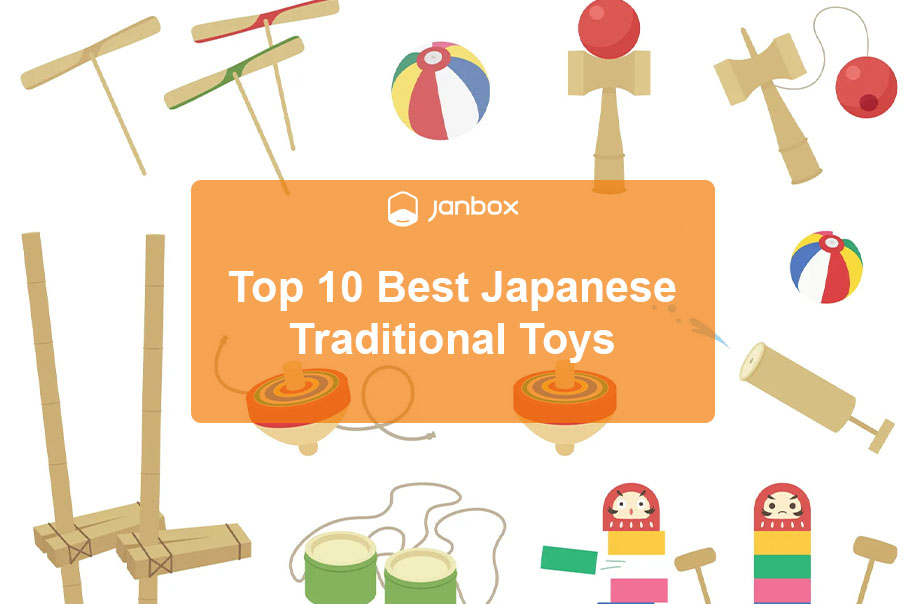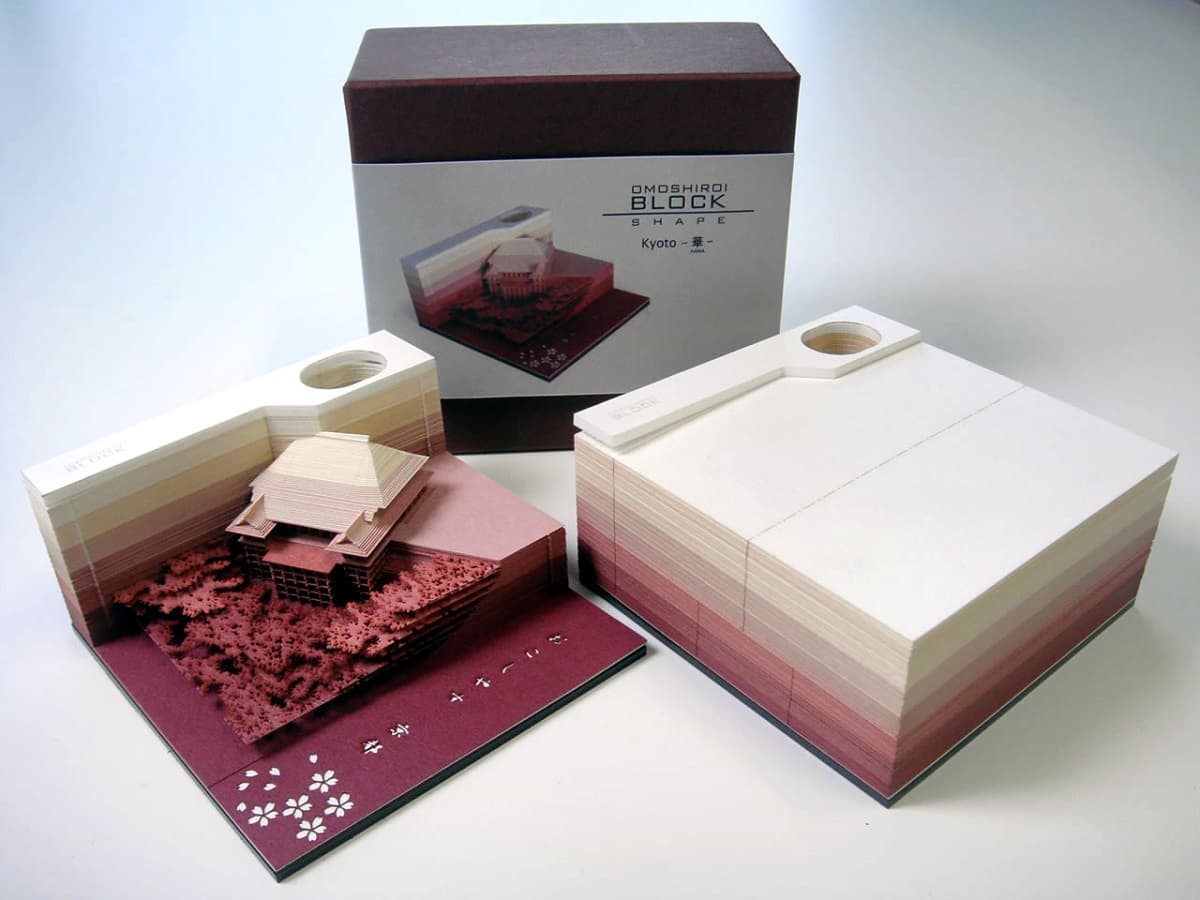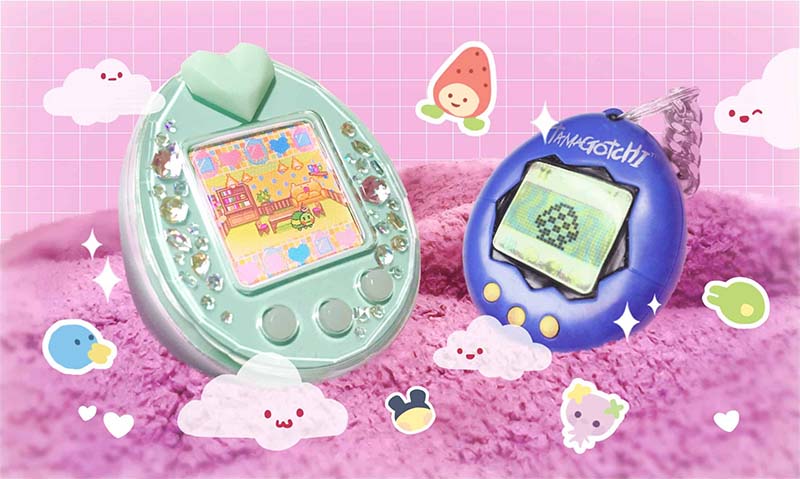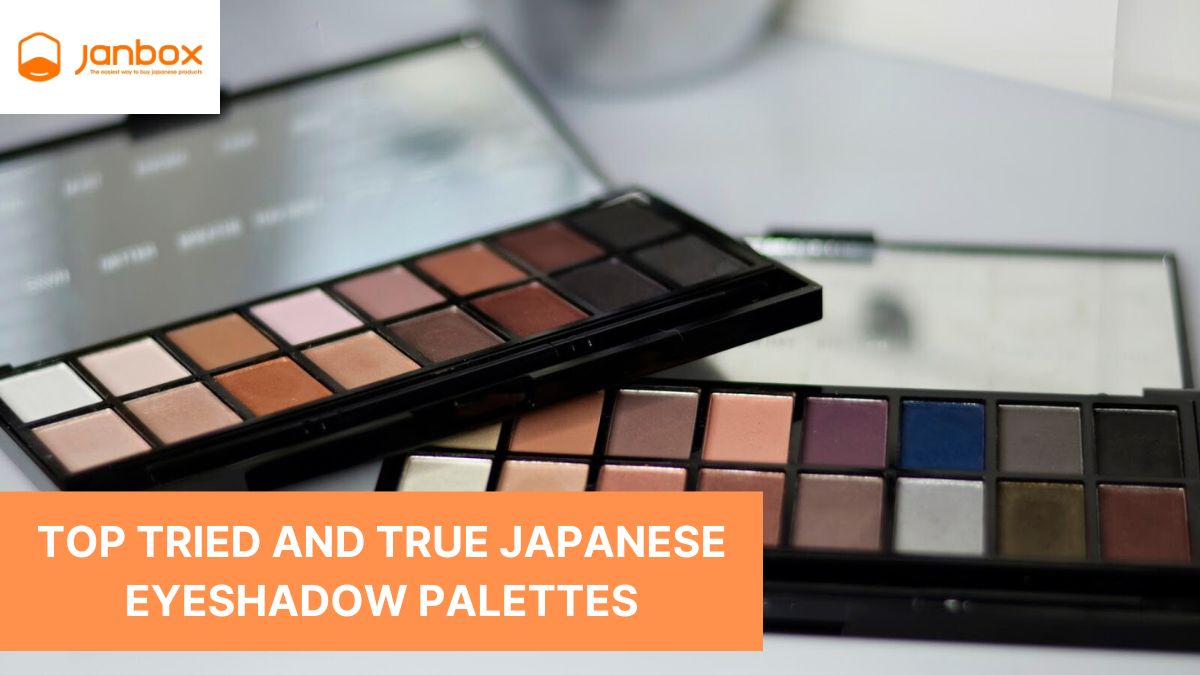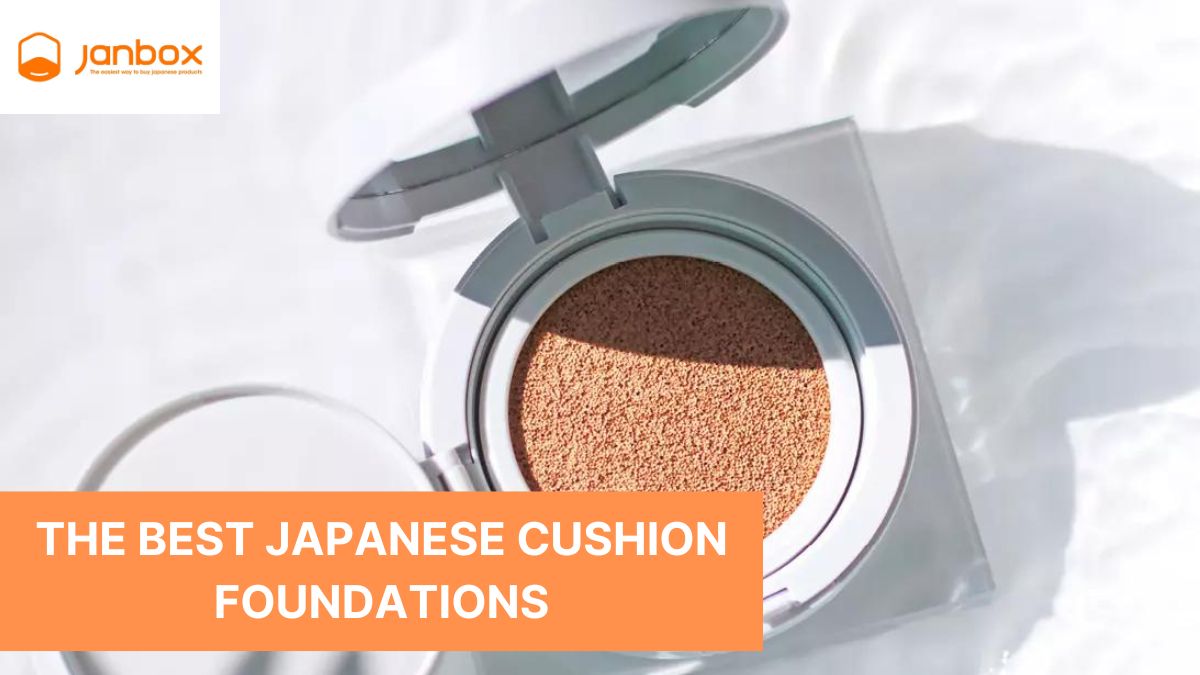Are you sourcing Japanese traditional toys to explore more about unique cultures and life in Japan from the past to the present? Then, you have come to the right place as Janbox has curated a list of the top 10 best types of Japanese dolls for you to refer to.
Make sure that you will stay with us until the end of the article to explore all types!
1. Top 10 Best Japanese Traditional Toys
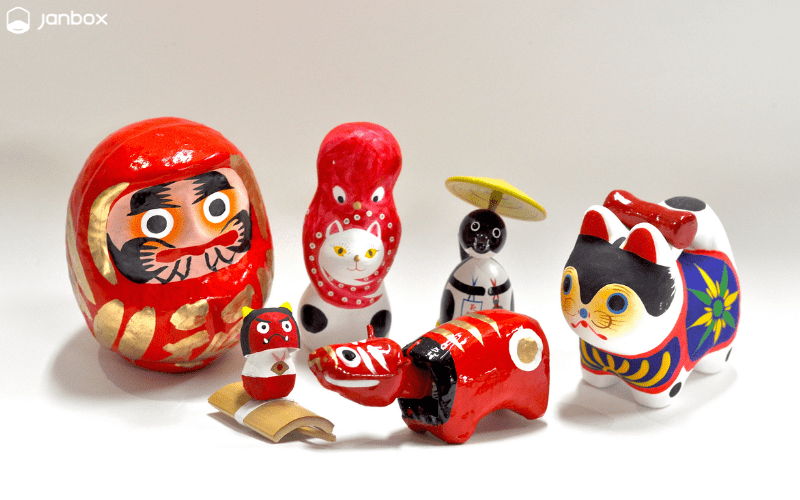 Traditional Japanese Toys
Traditional Japanese Toys
1.1.Taketombo
If you’re a huge fan of Doraemon cartoons, you’ll notice that the bamboo dragonfly, also known as Taketombo, is one of the items Doraemon and Nobita use a lot during episodes. It includes a small bamboo stick with a wooden helicopter rotor on its top.
When you play it, you have to spin it quickly with your hands and release it in the air to make it fly.
1.2. Tako
Another toy deserving a special mention in your list of Japanese folk toys is Tako, which usually has an important place in boys’ hearts throughout Japan. With regard to its origin, it was from China in the Heian and was considered widely popular in Japan afterward, especially in the Edo period.
If you search the phrase “Tako toy’ on Google, you will find a variety of its types from different shapes, colors, to patterns. However, one of the immensely common among merchant families in bygone days was Yakkodako designed to imitate human figures in humorous stances with their arms spread.
At that time, the merchants supposed these kites were similar to their servants and releasing these kites was their favorite pastime.
1.3. Beigoma
Beigoma is a small pointy-shaped toy with a diameter of around 3cm. Before making a spin, you need to wrap a 60-centimeter cord around it, then start releasing the cord and tossing it onto a surface.
It would be great if your Beigoma can still spin until there are no other spinning tops that stop and are knocked out of the play area. Of course, you will be the winner in that case.
One of the useful tips when playing it is that you should practice spinning your Beigoma until you hear a humming sound, a sign of it being spun properly, which makes it spin for a long time.
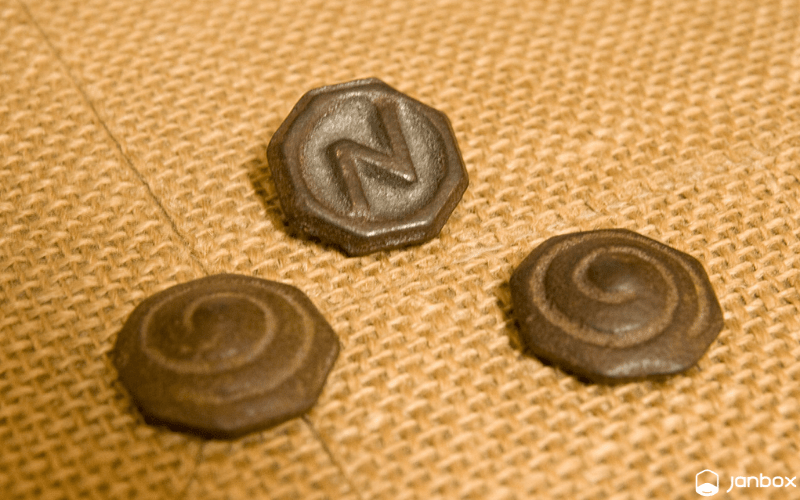
Beigoma
1.4 Hagoita
Hagoita, formerly known as hanetsuki, is similar to badminton without the net for the players to hit a feathery shuttle clock back and forth with paddles decorated with the face of Kabuki actors.
If keeping the shuttlecock in the air for as long as possible is extremely important to find out the winner in the badminton game, Hagoita is the same. However in case you let the shuttlecock fall down the ground in this game, you will be penalized with an Indian mark on your face.
1.5. Kendama
You may be surprised when knowing that Kendama was originally a drinking game, initially arriving in Japan in 1777 via Nagasaki port. Seeing the picture below, you may imagine how it would be played in a game.
It is a hammer with a ball at the top connected by a string. Besides, a hole is designed on the top of this toy to catch it on the spike. The goal of the game is to catch the ball in one of the cups by swinging it up.
In the game with Kendama, if you couldn’t catch the ball into the cup, drinking wine would be a form of a penalty. It seems simple but there is the fact that this game is becoming more difficult and difficult nowadays. Therefore, make sure that you are excellent at drinking when starting to play it.
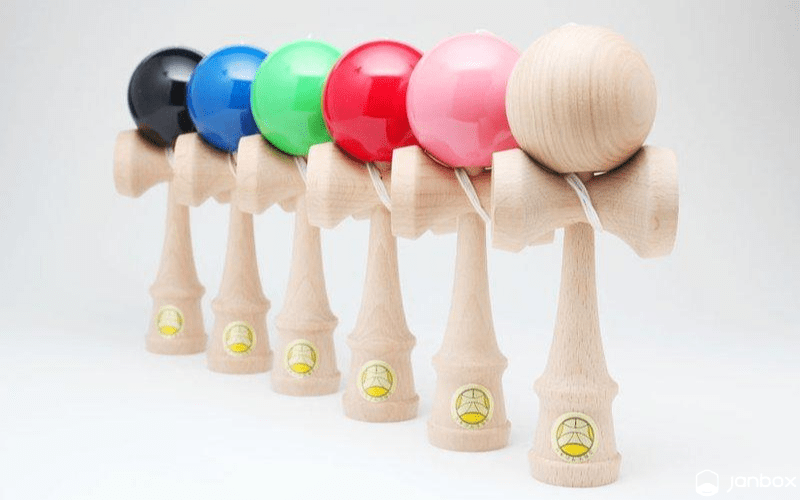
Kendama
1.6. Daruma Otoshi
Drama Otoshi is a traditional Japanese doll we can not ignore in this list. This game includes a stack of multi-colored circular blocks, and an angry-faced wooden doll called daruma on the top. You need to remove the blocks from beneath the daruma without knocking it down in the game.
You might not know that Daruma is believed to be based on Bodhidharma, a Buddhist monk from the 6th century whose arms and legs atrophied and fell off after nine years of constant meditation.
1.7. Kamifusen
Kamifusen is immensely popular in the list of traditional children’s toys in Japan. It is a ball made of glassine paper or called washi-a kind of paper with air resistance. Your responsibility in playing it is attempting to catch multi into one of the cups by hitting it with your hand.
We make sure that after playing Kamifusen, this game will certainly melt your heart, and bring a grin to your face that will last a lifetime after a series of hard-working days!
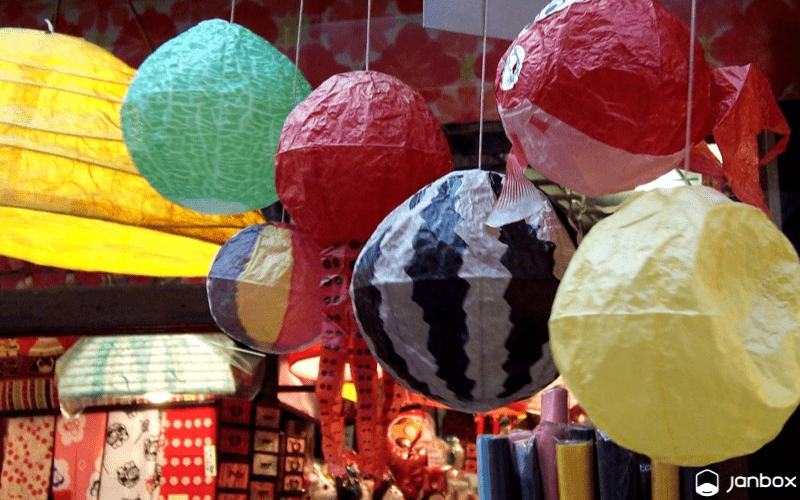
Kamifusen
1.8. Menko
Menko is a Japanese card game in which two or more players compete against one other. It’s also the name of the card deck that’s utilized in this game. Each player utilizes Menko cards, which are composed of thick paper or cardboard with illustrations such as anime, manga, and other works printed on one or both sides.
When playing it, you need to attempt to flip the other player’s card thanks to the wind or by striking your cards against it. You will certainly win this game if you get both two cards and own the most cards until the end of the game.
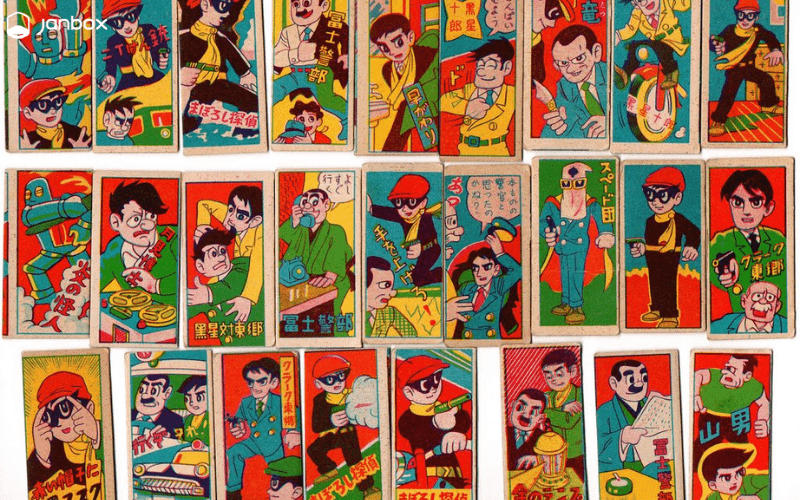
Menko
See more: 17 types of Japanese Traditional Dolls.
1.9. Ayatori
To play Ayatori, all you have to do is start with a 120-centimeter long string and make a loop with just manipulation of typing the ends together. You can completely play it alone or even with your friends.
When competing, one person holds the string in one shape while the other takes it and makes a different shape with it. Whoever makes a mistake and ruins the planned shape is the loser.
The imaginative beauty of the shapes can be appreciated. Some people use ayatori to create a surprise for their pals. This game seems quite simple yet requires the skillfulness of the player to be the winner!
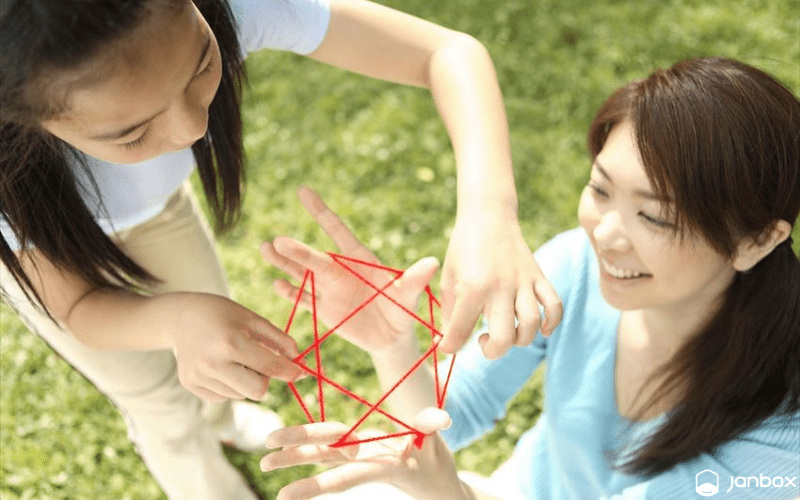
Ayatori
1.10. Otedama
Another toy that had its origin in China and reached popularity in Japan after World War II is Otedama. It can be said this toy was loved by girls throughout the country.
The basic principle of the game is to start with five bean bags on the floor and the player will pick one up and throw it in the air. You continue playing by catching bean bags until you have 4 bean bags in one hand and catching the left one in the other, which means you have to possess 5 bean bags to get success.
2. How to buy traditional Japanese Toys from outside Japan?
Due to some limitations, Japanese toy shops do not ship their products outside of Japan. However, don’t worry because Janbox is here to do this heavy lifting for you. Below is a detailed guide on how to buy traditional Japanese toys from outside Japan easily and quickly!
Step 1: Go to Janbox to start your buying process
You need to be on the homepage of Janbox to register and activate an account before purchasing any item you want. Don’t be worried if you are afraid of language barriers as it is currently supporting customers in many languages such as English, Japanese, Vietnamese, etc.
Now, let’s see in the right corner of your screen and click on Log in/ sign up then fill in your personal information.
Step 2: Search for your favorite toys
Type your favorite toys in the search box and consider choosing your item specialization carefully related to size, shape, decoration,.. then click on “add to cart” before placing an order.
Step 3: Make a payment in the first phase
At this stage, you must make a payment for your entire order. Do not be worried as we will notify you as soon as we transport your products to our warehouse securely. Please bear in mind that you need to have enough money in your e-wallet at Janbox to be able to play successfully.
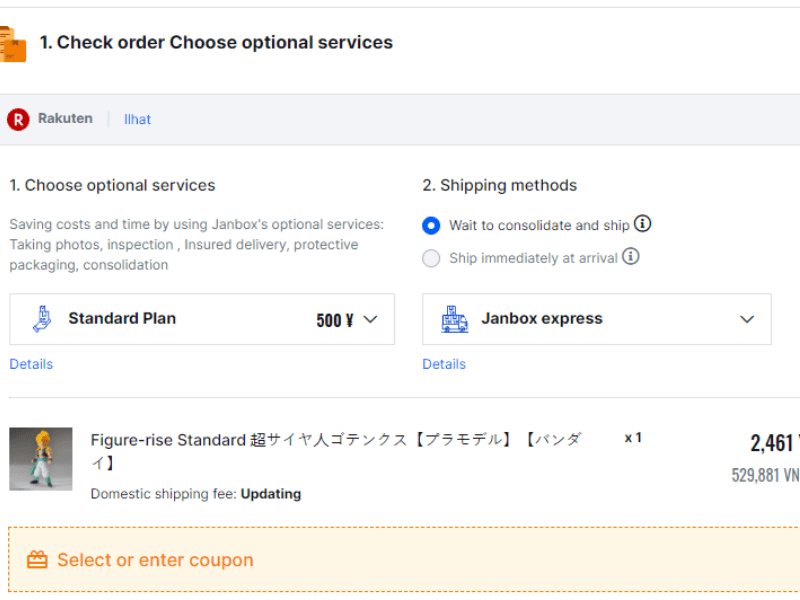
How to buy Japanese traditional toys on Janbox.
Step 4: Continue payment the rest price of your order
After getting the notification, you will go to the next stage that requires paying for domestic and international shipping fees. The price can be different as it depends on the shipping unit you choose.
Don’t forget to fill out your exact receiving address to get your package in the fastest time! We also provide a feature on our website or application for you to keep track of your order conveniently just with a few clicks.
Conclusion
After reading our article, perhaps you’ve pocketed some Japanese traditional toys to make the list of your toys more diversified. We also hope that the information mentioned above will contribute to your buying toys via Janbox conveniently.
If you find it helpful, do not forget to leave 5 stars and share it with your friends so that they are able to buy lovely toys easily. Thank you for reading!

